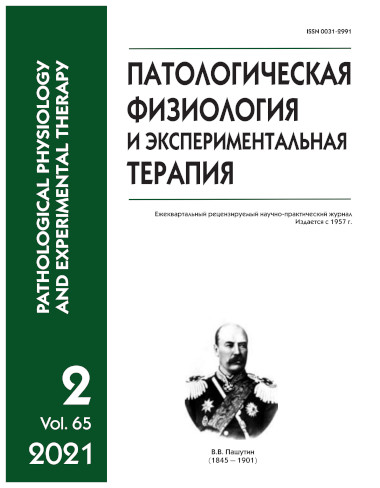Reparative process in superficial burns treated with wound cover, including collagen bands and platelets (experimental study)
Abstract
Activity of stem cells and primordial cells is the main reparative factor in healing of superficial burns. Components of platelet granules could stimulate cell migration, proliferation, and secretion. Survival of platelet granules can be enhanced by prior platelet stabilization with silver nanoparticles. The aim of this work was to study reparative effect of collagen bands, saturated with platelets, on mice with superficial burns. Methods. Three types of wound coatings were used: 1) collagen bands without platelets (control); 2) collagen bands with native platelets (1st experimental group); 3) collagen bands with platelets, prestabilized with 2.5 µM nanosilver (2nd experimental group). Platelets were harvested from venous blood of volunteer donors preserved in EDTA. Platelet were stabilized by incubation with 2.5 µM nanosilver at 22°С for 1 hr. In all experiments, the collagen bands contained 30-31 million platelets with granules, i.e., biologically normal platelets. Collagen bands were incubated with platelets at 37°С for 30 min, and then all solution with unadhered platelets was eliminated. Experimental bands were stored at -40°С and defrosted immediately before experimental treatment. Results. After three days of treatment, the control group had a pronounced inflammatory reaction and significant deformation of dermal collagen fibers. In the experimental groups, these processes were less pronounced. Collagen bands with platelets significantly increased migration of epithelial cells from the skin derivatives and migration of fibroblasts from the deep dermal layers. After five days, the epithelization of wounds in the control group was partial, while in experimental groups, epithelium covered all areas of the wound. Experimental groups maintained high migration activity of epithelial cells and fibroblasts. Structurally deformed collagen fibers were detected sporadically in the control group and were not detected in the experimental groups. Decompactization and swelling of fibers in the control group were observed throughout the depth of the derma, while in the experiment groups, swollen fibers were present only in the deep dermal layer. Conclusion. The use of collagen bands with platelets accelerated the processes of epithelialization and collagen remodeling associated with preserved local infiltration of the wound with inflammatory cells.






